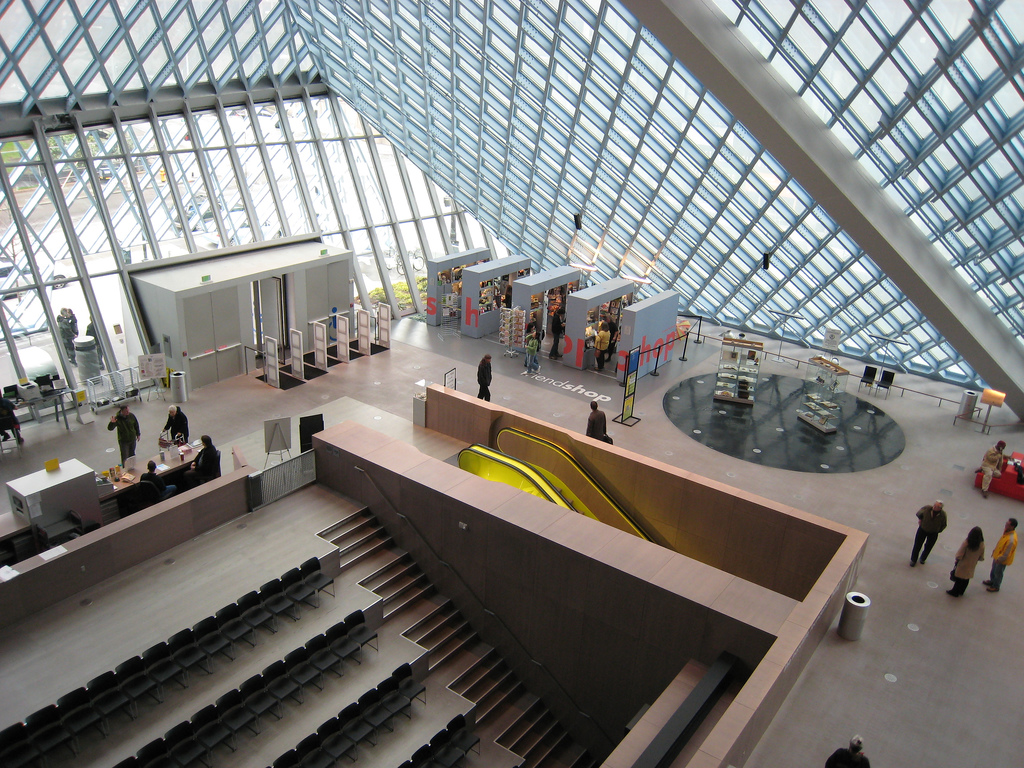
Exploring the role of the 21st century library in an age of e-books and online content
Photo Credit: Flickr user Jeff Wilcox.
In the age of e-books and online content, what’s the role of the 21st century library? That question brought together library directors from Knight communities across the country last weekend. During the conference, the American Library Association shared its vision for the future of libraries. Here’s a sample of the association’s framework, also included in “Confronting the Future: Strategic Visions for the 21st Century Public Library”: 1.) Physical to Virtual In the past, libraries have existed exclusively as physical spaces, but this is changing as content moves online and libraries take steps to better meet community needs. For example, in Philadelphia, Knight-funded free library “hot spots” bring computer access, classes and the Internet to four locations around the city. The spots include computers, printers and reference collections of free library materials. They’re staffed by computer assistants to train users and offer free instruction and open-access computer time. 16,000 people visited these hot spots in just the first year. Although the physical structure of the library remain important places for community members to gather, libraries are finding ways to embrace opportunities in the virtual space. According to the Institute of Museum and Library Services:
- 67% of libraries offer access to e-books.
- 64% are the only source of free Internet access in their communities
- 169 million people used one of 16,000 public libraries last year; 77 million of them used a library computer
- 86% of public libraries provide free Wi-Fi
2.) Individual vs Community Promoting libraries as strong community anchors that enhance civic engagement, cultural opportunities and economic vitality is one of the primary goals of the Institute of Museum and Library Service’s 2012-16 strategic plan. Libraries, as well as museums, are being urged to look for opportunities to advance solutions to community problems by providing safe places for gatherings, centers for community vitality and connecting points to community services. By creating partnerships with businesses, hospitals, schools, museums and residents, libraries can engage entire communities. For example, the Miami-Dade Public Library offers free literacy programs and special services so all residents can enjoy full access to books, music and more. Last year, it celebrated the spirit of Colombia with traditional dances during the Art of Storytelling Festival. 3.) Collection Library vs Creation Library No longer are libraries just places to store content, instead they are becoming places for people of all ages to create and produce content themselves. During the weekend, library directors toured YouMedia Miami, a new project at Miami’s North Dade Regional Library aimed at teaching teens how to use technology to tell stories and engage with the world around them. Based on the success of YouMedia Chicago, the program builds on the role libraries play as places of innovation and exploration and allows kids to create and explore. Programs also focus on digital literacy and training. Libraries themselves can and will also become content curators. During the conference, Amy Webb, CEO, WebbMedia Group, released a toolkit to help libraries evaluate their impact in the digital age. Part of the toolkit advises library directors on how to explore social media as a tool to connect with new audiences. By embracing tools like Twitter, Facebook, YouTube, Flickr, SlideShare and blogging, libraries can stay current with the latest tools and networks in a constantly evolving media ecosystem. Webb advised library directors that the right kinds of social media content can be seen by tens of thousands of people and make a lasting and positive impact on any library community Read more about Knight Foundation’s Libraries Initiative, which helps libraries in 27 cities become true digital community centers that help foster informed and engaged communities.
Recent Content
-
Community Impactarticle ·
-
Community Impactarticle ·
-
Community Impactarticle ·


